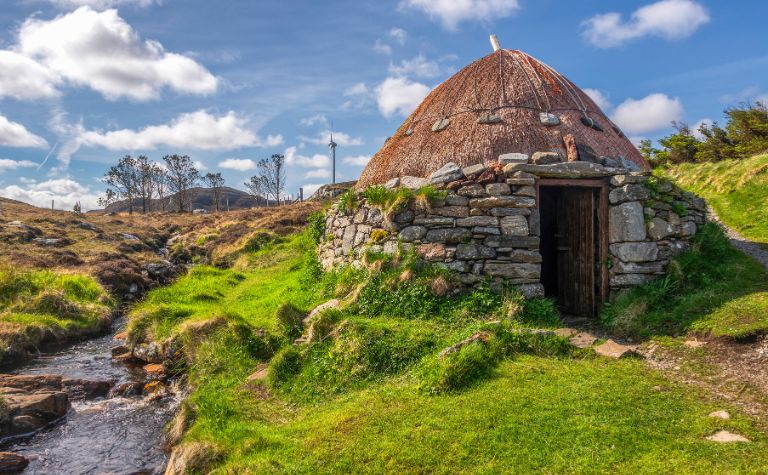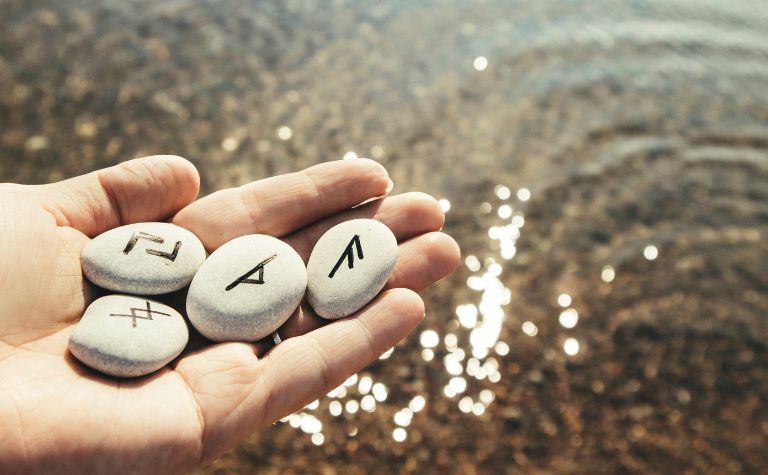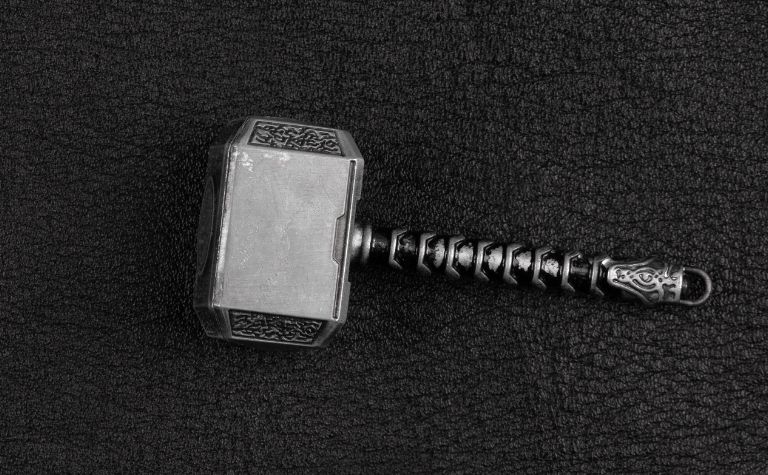Thanks to Marvel, Thor, Loki, and Odin are practically household names again. However, most people are at a loss when it comes to the more intricate details of Norse mythology.
For example, does Norse mythology have demons?
Norse mythology doesn’t specifically talk about demons. There are malevolent beings, some with supernatural or magical abilities.
However, nowhere in the surviving literature are they referred to as ‘demons’ or ‘demonic.’ The idea of demons appeared with the Christians.
This article will explore some of the darker, more evil beings in Norse mythology and explain how the idea of demons came to Norse pagans.
It will also look at some of the lesser-known creatures in the Norse myths and reveal whether there were any ‘spirits’ among them.
Also, see Norse and Celtic Mythology Compared to learn more.

How Demons Came to Norse Mythology
What scholars know about Norse mythology today comes primarily from two sources: the Prose Edda and the older Poetic Edda. [1][2]
They also get information from the Volsungs and outside sources – i.e., Christian writers writing about pagan beliefs.
However, the core of Norse mythology exists in the Eddas. The words’ demon’ and ‘demonic’ appear nowhere in either source.
When Christians began trying to convert Vikings and other pagans to Christianity, they introduced the concept of demons into the popular consciousness.
They also demonized the Norse gods themselves. Before that time, the Vikings knew nothing of ‘Satan’ or ‘demons.’ [3][4]
The Christians made associations between the Norse myths and their own Bible. They linked Loki to Satan and Valhalla to Heaven.
They did this to make Christianity more palatable for the pagans; they also adopted pagan holiday traditions into Christianity’s Christmas for the same reason.
Even so, there was never an explicit mention of ‘demons’ in Norse mythology.
Also, see Do Norse Gods Care About People? to learn more.

Are There Any Monsters in Norse Mythology?
Just because there aren’t any demons in Norse mythology doesn’t mean there aren’t bad, dangerous creatures in the tales.
There are plenty of monsters in Norse mythology and folklore, including but not limited to the following:
- Jotnar (giants)
- Fire giants
- Dark elves
- Dwarves
- Fenrir
- Jormungandr
- Draugr
- Mares
- Huldra
- Fossegrim
- Trolls
- Dragons
- Kraken
- Garm
- Nidhogg
Most people are familiar with the Jotnar (or giants) from Jotunheim. Some even know about the fire giants, dark elves, Fenrir, and Jormungandr.
However, only those genuinely interested in studying the Norse myths are usually familiar with the other creatures on this list.
The following sections will look at each of them, including a summary of what they are.
Jotnar (Giants) and Fire Giants
These creatures lived primarily in the icy world of Jotunheim, though they could travel just as the gods could.
Most Norse myths agree that the Jotnar, or Jotunn, are the primary enemies of the Aesir.
In many stories, Thor fights and defeats them. In others, the giants attempt to outwit the gods in different ways.
The fire giants, like Sutr, are giants from Muspelheim, the land of fire.
The Aesir don’t have as many interactions with them. However, the myths claim the “sons of Muspel” will fight alongside Loki at Ragnarok.
Dark Elves and Dwarves
Some sources claim the dark elves and dwarves are the same creatures, being called different things. Others talk about them as two distinct races.
However, there are only nine realms according to Norse mythology, and splitting the realms for dark elves (Svartalfheim) and dwarves (Nidavellir) would create ten instead.
Therefore, they’re likely the same beings. They are often foul-tempered but excellent artisans.
Also, see What Are the 9 Worlds in Norse Mythology? to learn more.
Fenrir and Jormungandr
Fenrir and Jormungandr are the two sons of Loki by the giantess Angrboda. Fenrir is a giant wolf, and Jormungandr is the world serpent.
The gods, fearing Loki’s children, petitioned Odin to get rid of them and their sister, Hel.
Odin threw Jormungandr into the sea, where he grew so large that he eventually circled the entire world and was forced to hold his tail in his mouth.
The gods chained Fenrir under the earth, and Odin sent Hel to rule the realm of the dead.
The three will break free at Ragnarok and join Loki in his fight against the Aesir.
Draugr, Mares, Huldra, and Fossegrim
These are some of the lesser-known creatures from Norse mythology and Viking folklore.
Draugr are undead restless spirits bent on revenge and destruction. Some people equate them to zombies, though they aren’t driven by hunger.
Instead, they are angry warriors who attack for the joy of it.
Though Norse mythology didn’t have demons, Mares would be the closest thing to one. [5] They are vicious creatures who sit on the chests of sleeping victims.
There, they suffocate them while giving them horrible dreams.
In Scandinavian folklore, the Huldra are like Sirens; only they live in forests instead of at sea. [6] They are beautiful women with long tails like cows and tree bark growing over their backs.
They lure unsuspecting men away from their fellow travelers and seduce them.
Then, they ask them to marry them. If the men refuse, the Huldra kill them. If the men agree, the Huldra lose their non-human features and become old and extremely powerful.
Eventually, they usually kill the men anyway.
Fossegrim, or Grim, are musically minded spirits that live in rivers. [7] People believed they would teach men to play the fiddle in exchange for food.
They were less kind to women and children and would lure them into the river to drown.
Trolls, Dragons, and Kraken
These beings aren’t exclusive to Norse mythology and Scandinavian folklore. Instead, they appear in many cultures’ legends, myths, and tales throughout history.
There’s nothing unique about Norse trolls, dragons, or Kraken. Their descriptions and attributes are similar to creatures of the same name in other stories.
Garm and Nidhogg
Garm is a vicious guard dog, said to guard the gates of Hel. He’s large, ferocious, and usually appears covered in blood.
Nidhogg is sometimes described as a dragon and sometimes as a serpent. Either way, he’s a large, reptilian creature living in the world tree, Yggdrasil’s roots.
Some sources claim that he feeds on murderers, adulterers, and oath-breakers.
However, some scholars believe those attributes only came after Christians began influencing Norse mythology. [8]
Also, see Who Will Survive Ragnarok? to learn more.

Did Norse Mythology Have Spirits?
Norse mythology had spirits, but they weren’t traditional ghosts. Instead, Draugr were a type of spirit, as were Haugbui, which guarded burial mounds and only attacked if someone disturbed the burial site.
Additionally, the dead who lived with Hel in her realm are sometimes described as spirits.
There were also spirits of rock, trees, and water. These were similar to faeries and nymphs in other mythologies, though they didn’t share those same names.
Final Thoughts
Norse mythology didn’t have demons. Demons were a concept introduced into Viking culture by the Christians. However, Norse mythology has its own malevolent creatures.
Also, see Why Did Thor Kill the Giants? to learn more.
References:
[1] Source
[2] Source
[3] Source
[4] Source
[5] Source
[6] Source
[7] Source
[8] Source
